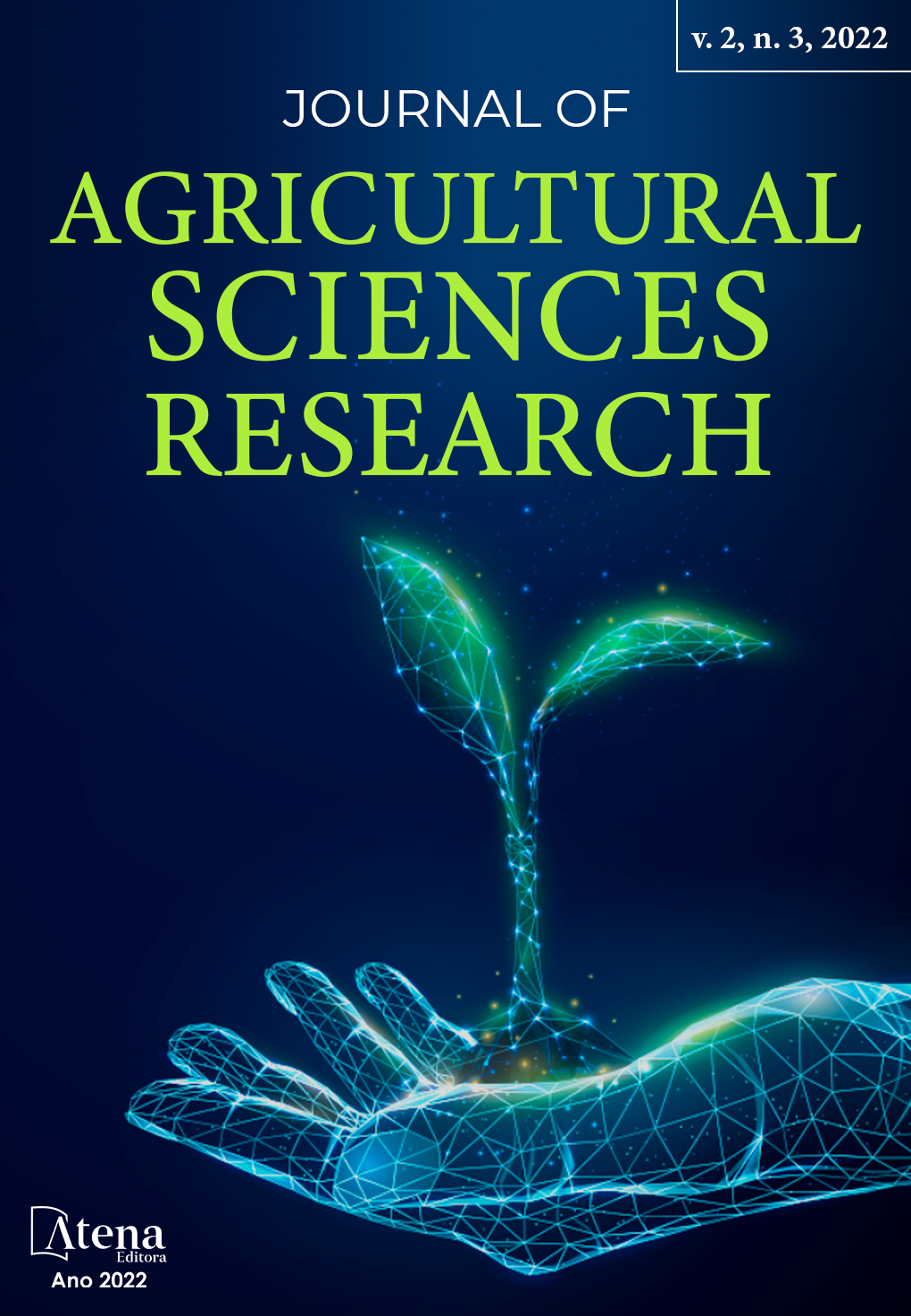
OPTIMUM ECONOMIC IRRIGATION LEVELS OF CONILON COFFEE (Coffea canephora) IN THE NORTH FLUMINENSE REGION, BRAZIL
The economic evaluation of irrigation generally involves the quantification of productivity in response to the total water depth applied. The characterization of the crop response to the application of water has been widely known as the Water-Culture Production Function and in this sense, this work aimed to obtain the production function curve for Conilon coffee. (Coffea canephora), depending on the irrigation depths applied. The experiment was carried out in an existing crop field in the area belonging to the Universidade Estadual do Norte Fluminense Darcy Ribeiro in Campos dos Goytacazes, RJ, with a randomized block experimental design (DBC), composed by the water depth factor (0, 25, 50, 100 and 125% of ET0) calculated using the FAO 56 Penman-Monteith method. Productivity data (sc∙ha-1 and kg∙ha-1) were obtained by weighing the fruits, harvested manually. The relationship between the dependent variables (productivity) and the independent variables (total water depth applied) was obtained by second degree polynomial regression analysis and, to determine the maximum productivity, in relation to the applied water depth, deriving the equation polynomial and equating the result to zero. From the obtained data, the production function equation was generated by second degree regression analysis to obtain the adjustment coefficients a, b and c. With the productivity data and the costs related to irrigation, the water depths were calculated to obtain the maximum physical productivity (Wmpf) and maximum economic yield (Wmre), considering grain productivity. It is concluded that the total blade of maximum economic efficiency was around 1600 to 1800 mm, while the blade of maximum physical productivity, between 1900 to 2000 mm, being economically viable the production in Norte Fluminense.
OPTIMUM ECONOMIC IRRIGATION LEVELS OF CONILON COFFEE (Coffea canephora) IN THE NORTH FLUMINENSE REGION, BRAZIL
-
DOI: 10.22533/at.ed.973222201031
-
Palavras-chave: Productivity, Irrigation Management, Water Deficit.
-
Keywords: Productivity, Irrigation Management, Water Deficit.
-
Abstract:
The economic evaluation of irrigation generally involves the quantification of productivity in response to the total water depth applied. The characterization of the crop response to the application of water has been widely known as the Water-Culture Production Function and in this sense, this work aimed to obtain the production function curve for Conilon coffee. (Coffea canephora), depending on the irrigation depths applied. The experiment was carried out in an existing crop field in the area belonging to the Universidade Estadual do Norte Fluminense Darcy Ribeiro in Campos dos Goytacazes, RJ, with a randomized block experimental design (DBC), composed by the water depth factor (0, 25, 50, 100 and 125% of ET0) calculated using the FAO 56 Penman-Monteith method. Productivity data (sc∙ha-1 and kg∙ha-1) were obtained by weighing the fruits, harvested manually. The relationship between the dependent variables (productivity) and the independent variables (total water depth applied) was obtained by second degree polynomial regression analysis and, to determine the maximum productivity, in relation to the applied water depth, deriving the equation polynomial and equating the result to zero. From the obtained data, the production function equation was generated by second degree regression analysis to obtain the adjustment coefficients a, b and c. With the productivity data and the costs related to irrigation, the water depths were calculated to obtain the maximum physical productivity (Wmpf) and maximum economic yield (Wmre), considering grain productivity. It is concluded that the total blade of maximum economic efficiency was around 1600 to 1800 mm, while the blade of maximum physical productivity, between 1900 to 2000 mm, being economically viable the production in Norte Fluminense.
-
Número de páginas: 19
- ANDRE DALLA BERNARDINA GARCIA
- Claudio Martins de Almeida
- Lorenzo Montovaneli Lazzarini
- CHRISTIAN DA CUNHA RIBEIRO
- José Carlos Mendonça


